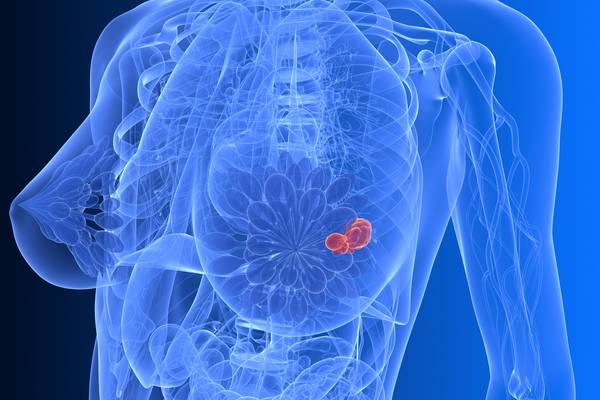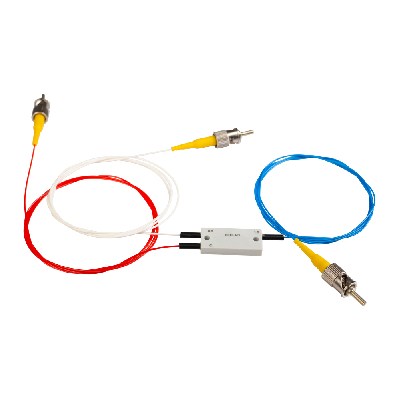Breast cancerDetection
Fiber-optic probe for breast cancer detection
SEDI-ATI designs optical fiber needle probes for the early diagnosis of breast cancer using a fluorescence detection technique. This is a less traumatic preliminary step for the patient as it is intended to confirm or rule out the need for a biopsy.
Majorconstraints
- Because it will penetrate the skin and tissues as well, the solution must be biocompatible and sterilized
- In order to penetrate the skin, the needle requires a specific profile and precision machining, difficult to achieve
Thechallenge
Limit the need for biopsies by making an early diagnosis of breast cancer using fluorescence technics.
Fiber optics to detect breast cancer
Breast cancer is women’s major cancer cause of death. Early detection, i.e. at an early stage of cancer development, can lead to more effective treatment.
When a suspicious mass is detected by mammography, the patient must undergo additional tests to determine whether it is a benign or malignant tumor. Indeed, a mammogram or ultrasound cannot tell whether or not cancer cells are present.
An innovative medical device under study
SEDI-ATI has designed a medical device that consists of an optical probe in the form of a small needle inside which is inserted an optical fiber from 200 µm to 600 µm core diameter. The profile of the needle, similar to that of vaccine needles, would allow it to pass through the skin without prior incision.
Under ultrasound guidance, the probe would be introduced down to the suspect lesion. It will then illuminate the cells with laser light. Without even injecting a marker product (fluorochrome), the cells will fluoresce, that is, they will emit their own light in response to the excitation caused by the incident light. This light will then be captured and guided to a detector by the same optical fiber.
By observing how the illuminated tissue scatters the light, the specialist can immediately confirm and refine his diagnosis of suspicious lesions. This examination is not intended to eliminate biopsies. It is intended to be a preliminary step that would significantly reduce the number of unnecessary biopsies.
80% excess biopsies
In practice, it is then necessary to perform a percutaneous tissue sampling, i.e. a biopsy, to analyze the cells in situ. This invasive procedure is often traumatic for the patient since it involves making an incision of a few millimeters to introduce a large needle up to the suspect lesion. Several samples are taken using the needle to cut tissue fragments. The procedure can last up to an hour under local anesthesia and can have painful consequences, especially when it is a macrobiopsy. The samples are then analyzed by a specialized laboratory, and the result is not known until several days later. Moreover, the American Journal of Surgical Pathology via Eurekalert denounces a routine examination carried out systematically when 80% of biopsies prove to be negative.
Immediately reassure 4 out of 5 patients
To avoid this traumatic experience for many women with benign abnormalities, SEDI-ATI contributes to the development of a substantially less uncomfortable method to detect cancer cells in real-time: in-vivo investigation by fluorescence spectroscopy! This examination would immediately reassure up to 80% of patients, i.e. 4 out of 5 patients.
The system requires clinical evaluation
Tests on tumor masses that have already been removed were carried out with the Gustave Roussy Cancer Institute in Villejuif, France. Further test phases are required to eventually apply this procedure to patients.
Call for projects
SEDI-ATI is at your service. Do not hesitate to approach us to discuss applications that might require the use of such a device, even in non-medical fields.
SEDI-ATIsolution
We offer a very special medical device consisting of an optical fiber inserted into a biocompatible<needle to penetrate the skin. The fiber needle is coupled to a wavelength division multiplexer to achieve fluorescence detection.
Avantagesde la solution SEDI-ATI
It is an atraumatic procedure as there is no need for a high-energy laser source. Indeed, the solution does not perform any treatment. It simply allows to illuminate the target and collect the emitting signal from it, i.e. the fluorescence emitted by the observed tissues.
The precise machining of the needle offers an ideal profile to penetrate the skin, hence reducing the patient’s discomfort.
Related products
Fiber-optic needle for medical applications
SEDI-ATI has acquired a very specific know-how in the integration of an optical fiber into a metallic needle. Fiber optic needles are suitable for diagnostic, dentistry and dermatology applications.
Multimode WDM for custom wavelengths
SEDI-ATI’s multimode wavelength division multiplexers are manufactured using a proprietary process based on a dichroic filter directly deposited onto the optical fiber.
Power fiber optic cables
Injecting high optical power into a fiber is quite tough. That is why SEDI-ATI has designed a broad range of power fiber optic cables.





